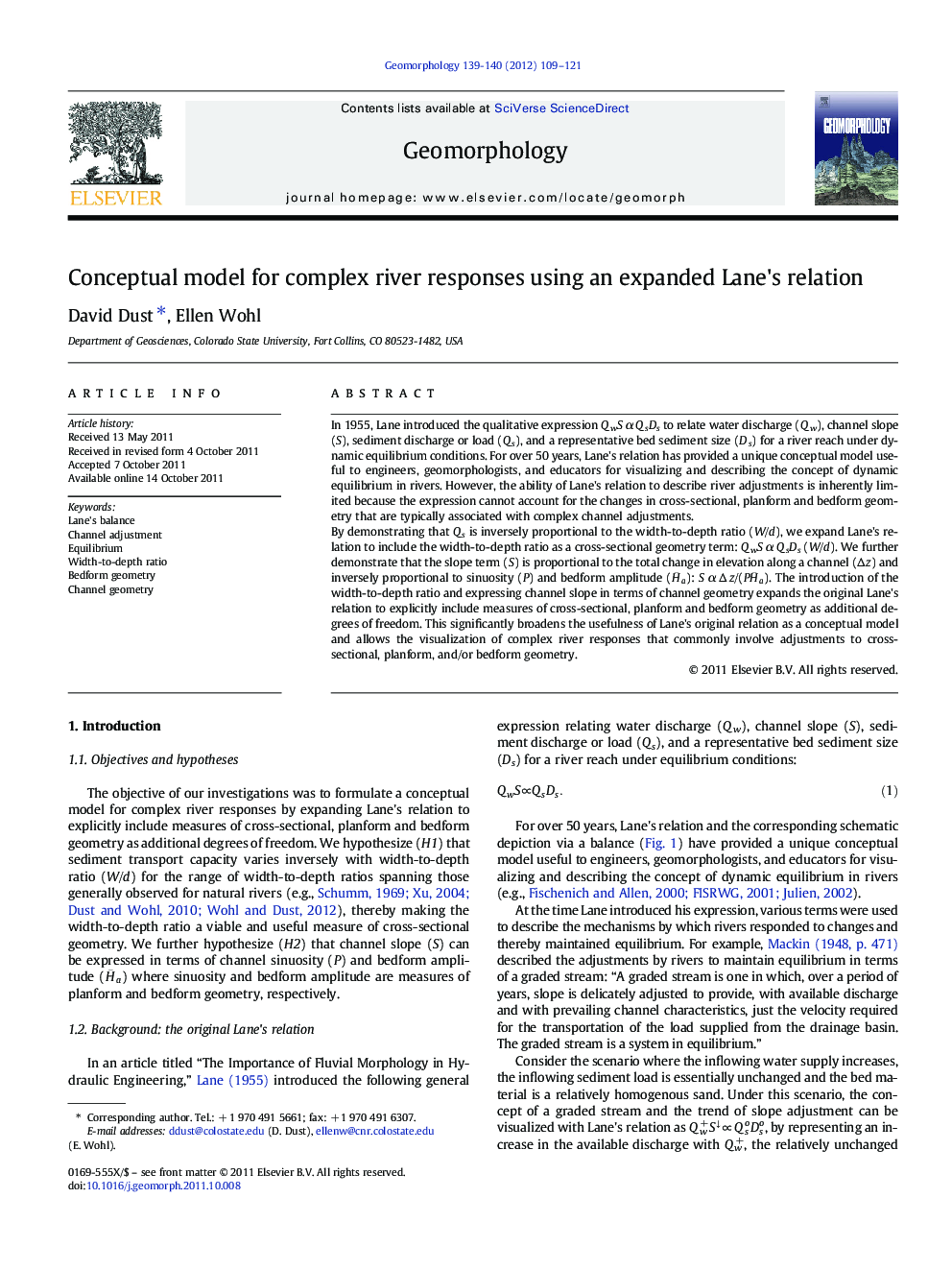| Article ID | Journal | Published Year | Pages | File Type |
|---|---|---|---|---|
| 4685299 | Geomorphology | 2012 | 13 Pages |
In 1955, Lane introduced the qualitative expression QwS α QsDs to relate water discharge (Qw), channel slope (S), sediment discharge or load (Qs), and a representative bed sediment size (Ds) for a river reach under dynamic equilibrium conditions. For over 50 years, Lane's relation has provided a unique conceptual model useful to engineers, geomorphologists, and educators for visualizing and describing the concept of dynamic equilibrium in rivers. However, the ability of Lane's relation to describe river adjustments is inherently limited because the expression cannot account for the changes in cross-sectional, planform and bedform geometry that are typically associated with complex channel adjustments.By demonstrating that Qs is inversely proportional to the width-to-depth ratio (W/d), we expand Lane's relation to include the width-to-depth ratio as a cross-sectional geometry term: QwS α QsDs (W/d). We further demonstrate that the slope term (S) is proportional to the total change in elevation along a channel (∆z) and inversely proportional to sinuosity (P ) and bedform amplitude (H¯a): S α ∆z/(P H¯a). The introduction of the width-to-depth ratio and expressing channel slope in terms of channel geometry expands the original Lane's relation to explicitly include measures of cross-sectional, planform and bedform geometry as additional degrees of freedom. This significantly broadens the usefulness of Lane's original relation as a conceptual model and allows the visualization of complex river responses that commonly involve adjustments to cross-sectional, planform, and/or bedform geometry.
